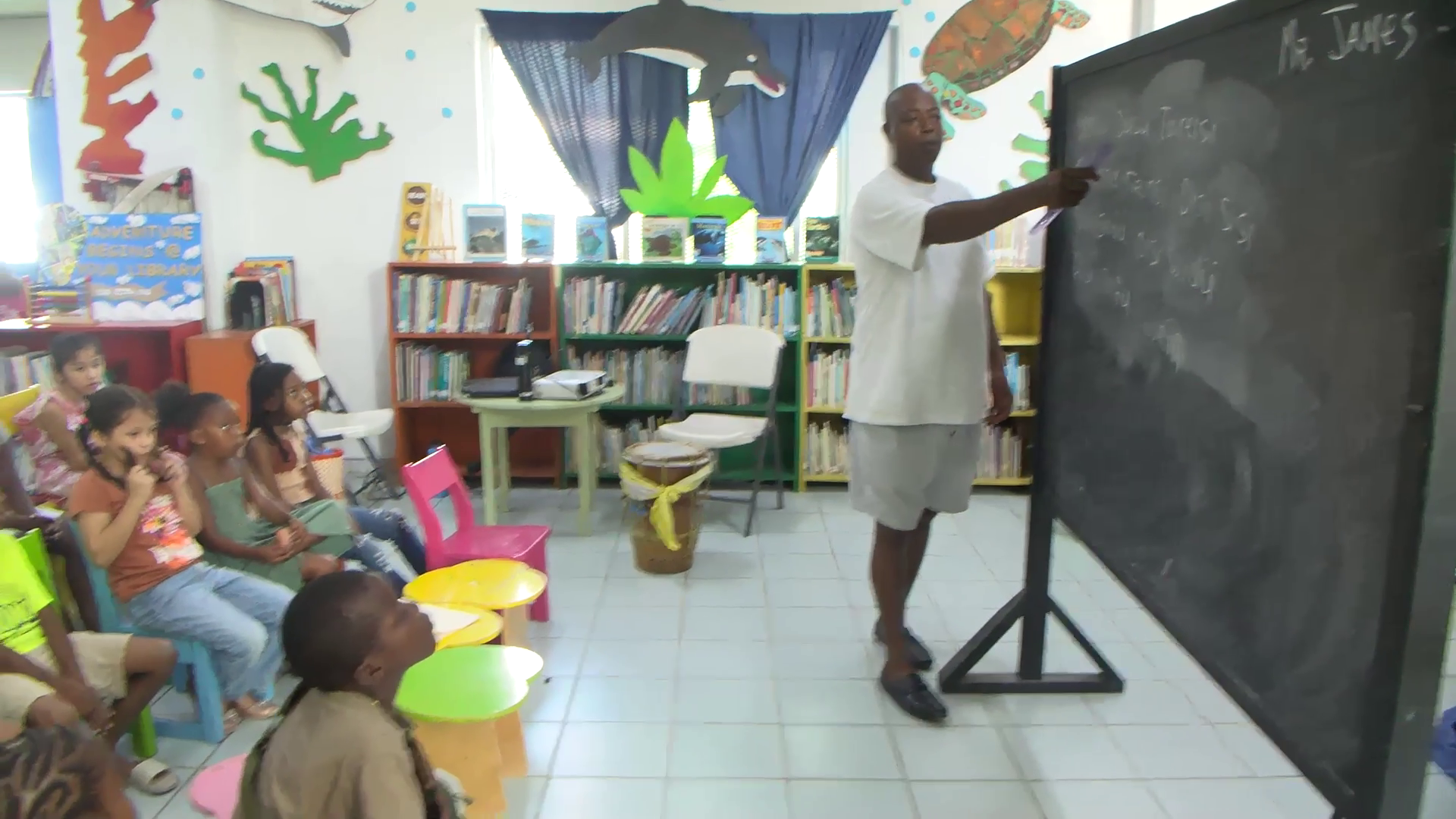The Garifuna language is in trouble and those working to preserve it say the time to act is now. Earlier this week, we showed you how children at the Leo Bradley Library are reconnecting with their roots via the Garifuna Language Retrieval Through Music Program. But it’s not just for kids. Today, we hear from one of the program’s passionate instructors, who says the language is open to everyone, young or old, Garifuna or not. News Five’s Britney Gordon has more on the growing movement to keep this vibrant language alive.
When you think of Garifuna music, chances are Andy Palacio’s iconic Wátina comes to mind. But there’s a new rhythm rising, one that’s not just about the beat, but about saving a language. For over thirty years, James Lovell has been on a mission to keep the Garifuna language alive. He’s taken that mission around the world, using one of the most powerful tools he knows: music. Through song, he’s teaching a new generation, and anyone willing to learn, that Garifuna isn’t just a language of the past. It’s a living, breathing part of Belize’s cultural soul.
James Lovell, Garifuna Teacher
“It’s something that I’ve developed, like I said, and I first started it with my children, some of them who were born in the state. And I realized that they don’t, I’m not teaching them Garifuna as often as I supposed to. And then it dawned on me on a November nineteenth, so many years ago. And then ever since then, I start, using speaking simple salutation words in Garifuna to my children. And then I realized that I can change songs or transpose songs from English into Garifuna.”
Born and Raised in Dangriga, Lovell was steeped in Garifuna culture, its food, clothing and music, and has seen firsthand how the popularity of the language has declined. Now, Lovell travels the world, teaching Garifuna to anyone willing to learn.
“I’ve worked teaching Garifuna in St. Vincent and the Grenadines. And I’ve done it in New York. I’ve done it in Dangriga. I’ve done it practically. as a matter of fact, I was doing it in Nicaragua recently. And I have to say, Britney, that the state of the Garifuna Nation it’s in dire need. It’s in dire straits.”
Angela Palacio, Organizer
“We kept our language because in St. Vincent they were. Not able to speak the language because they would be shot. So we preserved and we were able to go back and teach in St. Vincent, our language and stuff like that. However, even though we preserved the young people, we’re losing it because we’re not speaking it to our children. So it’s very vital that we teach it to the children and that the parents learn as well.”
One enthusiastic student was Armani Smith, who was eager to share what he’d learned so far.
“What is the best part of this entire session?”
Armani Smith, Student
“Probably because I get to learn a culture.”
Britney Gordon
“What is something that you’ve learned so far?”
Armani Smith
“Probably songs, numbers and how to talk to the Garifuna people.”
“Tell me one thing you’ve learned so far, say a phrase for me.”
Armani Smith
“Buiti Binafi.”
When it comes to preserving the Garifuna language, James Lovell isn’t just focused on the kids; he’s bringing the grown-ups into the classroom too. As part of his mission, Lovell hosted a special “Train the Teacher” session, giving adults the tools to teach Garifuna, even if they’re not fluent themselves. His approach? Keep it simple, keep it musical, and keep it accessible. Lovell says teaching adults isn’t all that different from teaching children, it’s all about creating a space where learning feels natural and fun.
James Lovell
“There’s definitely gotta be similarities because some of the teachers who are, will be teaching later on, some of them might not know how to speak the language. But what I’ll do, I’m gonna teach them the same song that I’m teaching the kids. And when they learn how to sing these songs and they record it and they can use technology and take that recording and play it for the children.”
Progress might be slow, but it’s steady. And for Angela Palacio, that’s what matters. She believes that if there are people willing to learn, the fight to save the Garifuna language is far from over.
Angela Palacio
“I think we have a lot of work to do. People see the importance, but they don’t take it seriously. We just have to try our part and hopefully they’ll grow up to realize that it is endangered.”
And here’s the beautiful part, this isn’t just for Garifuna communities. No matter your age or background, all Belizeans are being encouraged to dive into the culture and help keep the Garifuna language alive. Because saving it isn’t just about preserving the past, it’s about protecting a piece of who we are, before it’s lost for good. Britney Gordon for News Five.
